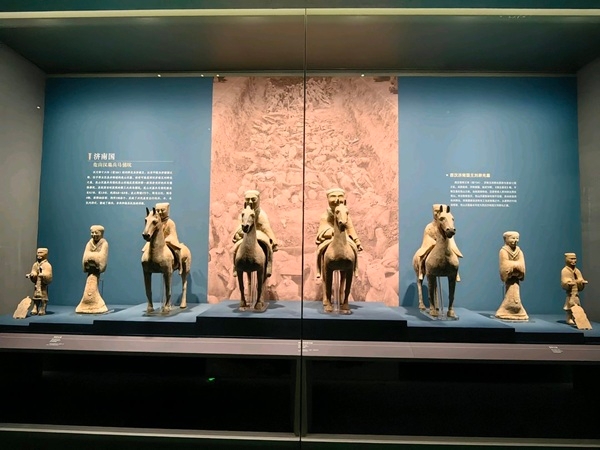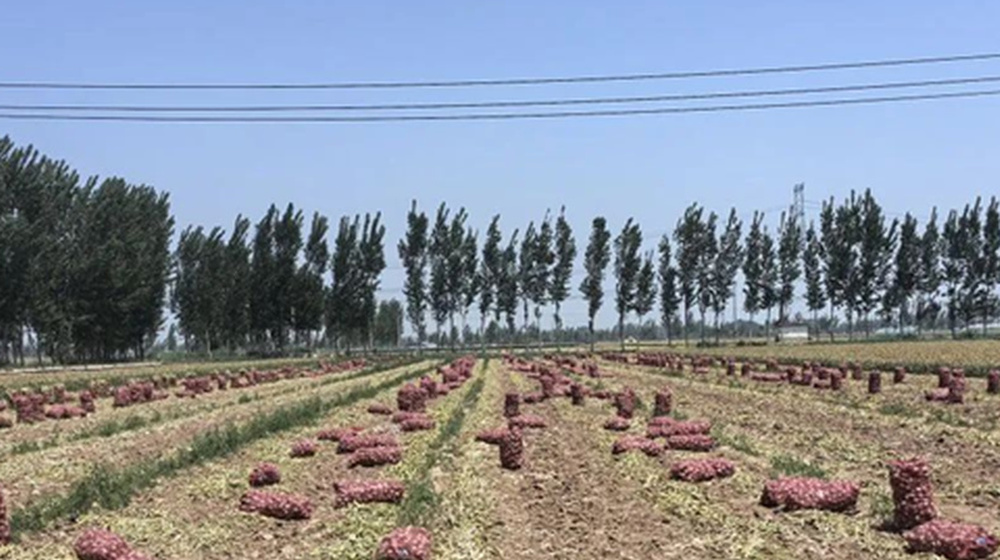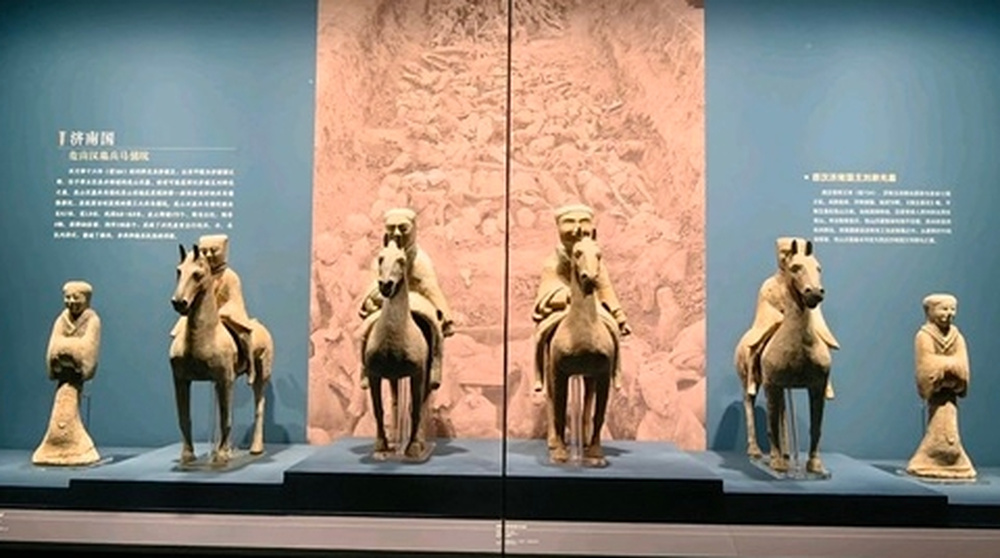Terracotta warriors are well known in Northwest China's Shaanxi province, but in Jinan, a city in East China's Shandong province, few know that it is also home to "terracotta warriors", which were unearthed in a Han Dynasty (206 BC–AD 220) tomb complex in Weishan in 2002.
Some of them are on a stunning display in a historical and cultural exhibition in Jinan. Despite their relatively small size, these figures exuded a remarkable presence.
Weishan is located in the western part of Zhangqiu district in Jinan. Inside the pits, archaeologists found over 170 terracotta warrior figurines, more than 50 terracotta horses, four terracotta horse-drawn carriages, and nearly 100 shields. Additionally, artifacts such as drums, ceremonial drums, as well as jade discs, stone tablets, and pearls related to drum music and rituals were also uncovered.
These seemingly modest terracotta warriors on display hold significant historical value. This is the first well-preserved terracotta warrior burial pit discovered in Shandong and the third largest terracotta warrior pit found in China after the famous ones in the Mausoleum of the First Qin Emperor and the Xianyang Terracotta Warriors in Shaanxi.
The terracotta warriors depict the luxurious scenes of noble Han Dynasty travels, combining cavalry, chariots, infantry, and various artifacts. Previously, such scenes were only reflected in Han Dynasty paintings and other artwork. The terracotta warriors from the Weishan Han Tomb represent the first physical evidence of these historical depictions unearthed in modern times.

Terracotta warriors excavated in Jinan are displayed in the historical and cultural exhibition. [Photo/Dazhong News]
编辑:曹晓旭








